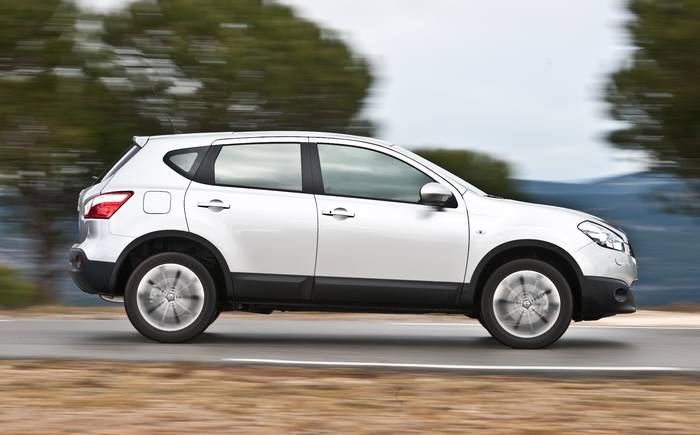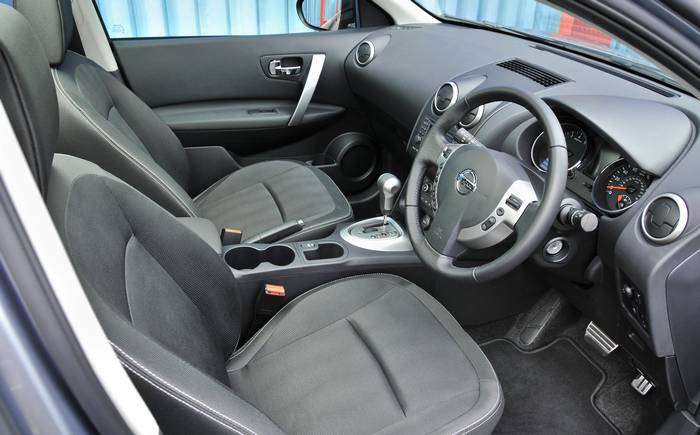Nissan Qashqai Mk1 review (2007-2013)
The original Qashqai is still a very desirable crossover SUV

What is the Nissan Qashqai?
Take one part family hatchback, one part people carrier and two parts off-roader. Stir well and voilà – you’ve got the Nissan Qashqai. It sounds a bit of a mongrel but make no mistake, since the model was launched in 2007 in five-door form followed a year later by the five-door, seven-seat +2, it has been unfailingly popular. The Qashqai was refreshed in 2010 with styling tweaks inside and out, sufficient to make it Britain’s sixth best-selling new car in 2012 and 2013, as well as the most popular SUV.
To keep it high on people’s shopping lists, Nissan left nothing to chance. Mk1 Qashqai buyers are spoilt for choice with a wide range of trim levels and engines available with both the five and the five-door +2. There are two petrol engines (1.6 and 2-litre) and three diesels (1.5,1.6 and 2-litre).
Search for and buy used Nissan Qashqai on driving.co.uk
Trim levels ascend from Visia through Acenta, n-tec+ and 360 (tested here), to the range-topping Tekna. Bluetooth, four electric windows, air-con, remote locking and alloy wheels are standard across the range.
Like most new soft-roaders, you can have your Qashqai in two or semi-permanent four-wheel drive. The cheapest Qashqai is the 1.6 Visia 5dr; the most expensive, the 2.0 dCi Tekna 4WD auto 5dr. Despite strong sales, residual values of the Qashqai hold up well.
The drive
It’s a high-riding, quasi off-roader so expect lots of body roll and mushy steering, right? Up to a point. Despite its 2010 facelift, the Qashqai did begin to feel a bit outdated by the time of its replacement at the beginning of 2014. On first acquaintance, our test car felt less composed in corners and on bumpy roads than newer rivals such as the Mazda CX5, and its 1.6-litre, 130hp diesel engine (it entered the line-up last year) less eager from low revs. But as the miles went by, and as passengers piled on board, slowly and surely the Nissan’s apparently soft-riding set-up began to take on a different, more pleasing character.
At its heart is great damping, an ability to keep body roll in check and the car poised and controllable on bumpy, twisting roads. Meanwhile, with the engine spinning smoothly and quietly in its working rev range, the Qashqai bowls along fluently and economically.
The gearbox divided opinion, some testers finding it smooth and sweetly mechanical, others ponderous and the throw a little long. Engaging four-wheel drive via the selector knob positioned near the handbrake makes no discernible difference to the drive; you’d need to be in a sticky spot for the car’s All-mode 4×4 system to cut in and apportion drive to those wheels most in need of it.
The interior
Like the exterior, the cabin is conservatively but attractively styled, and clothed in quality materials. It neither prompts squeals of delight nor groans of disapproval, no small achievement in this sector and doubtless one of the reasons the car is so popular.
The fascia is sensibly laid out. It would be a little austere were it not for the occasional touches of aluminium-effect plastic at the base of the gearshift, on the door pull and around the steering wheel controls.
There’s a well-integrated infotainment screen on the centre console where, on our test vehicle, we could view a 360-degree image of the area immediately outside the car. It’s useful for identifying cyclists in dense, stop-start traffic but ultimately, it feels like a novelty.
The rear cabin is roomy while on the +2 version there’s an additional row of two individual, folding seats. The model’s wheelbase is 135mm longer than the standard five-door’s to accommodate them but they are suitable only for children. Again it’s an efficient but austere environment; we were grateful for our test car’s panoramic glass roof.
What to look out for
The Nissan Qashqai has performed well in reliability and quality surveys, including those by JD Power and Warranty Direct, and Nissan as a whole is generally well-rated in the UK — behind the other Japanese manufacturers, but ahead of most of the rest. Diesels used mainly for short low-speed journeys have suffered sooting-up of their particulate filters, there have been problems with rear shock absorbers, and there have reports of quality niggles including leaking windscreens, weedy air con and trim defects as well as gearbox troubles with the CVT and in 2.0 dCi diesels.
Nissan has carried out recalls for front suspension and steering faults that could lead to a loss of vehicle control, seizing air conditioning compressors and engine stalling, fuel leaks from the particulate filters, potential for failure of the electric power steering and leaks from the fuel filter hose, a fairly lengthy list. Make sure any Qashqai you’re considering has had these jobs done.
The one to buy
Nissan Qashqai
Specifications
- Engine:
- 1598cc, 4 cylinders, (diesel)
- Power:
- 130hp @ 4000rpm
- Torque:
- 236 lb ft @ 1750rpm
- Transmission:
- 6-speed manual
- Acceleration:
- 0-62mph in 10.3sec
- Top speed:
- 118mph
- Fuel:
- 62.8mpg (combined)
- CO2:
- 119g/km
- Road tax band:
- C
- Dimensions:
- L 4330mm, W 11780mm, H 1615mm
Nissan Qashqai rivals
- Kia Sportage (Check used Kia Sportage prices on driving.co.uk)
- Toyota RAV4 (Check used Toyota RAV4 prices on driving.co.uk)
- Land Rover Freelander (Check used Land Rover Freelander prices on driving.co.uk)





